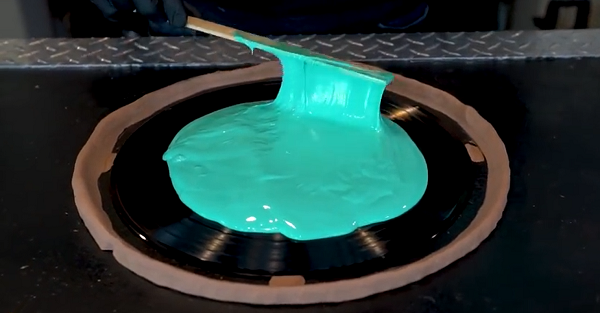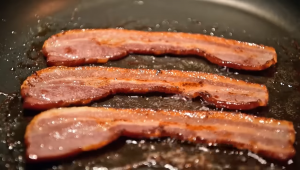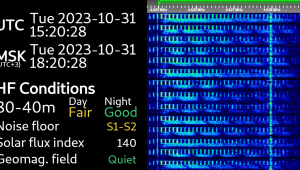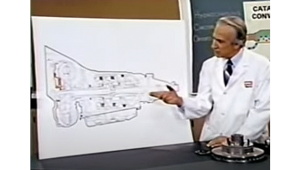...have too much time on their hands.
How to Make Your Own LPs

Yes, it is entirely possible for you to own a LP manufacturing plant. You don't even need lots of fancy equipment. You can make your own records at home, in particular, you can make a copy of existing LPs. I will share a Youtube video showing how to do it.
Before we begin, please note that this technique entails stealing music and thus violates numerous copyright laws not to mention the Eighth Commandment. I don't think the music industry is too worried about losing a ton of money here, but technically when you make a physical copy of a groove, you are doing a bad thing.
The how-to video comes from Youtuber The King of Random. He shows how to replicate a LP record using ordinary DIY materials. Specifically, he makes a mold of the record using silicon, then uses it to cast new records made of resin. Although actual record production uses metal and plastic instead of silicon and resin, conceptually this is pretty much the same way that LPs are replicated, using male/female molds.
In the video, after torturing a LP of "some Mozart music" he proceeds to make a mold starting with clay to form a border around the original disc, and to hold it in place. He next whips up a batch of silicon; he uses a slow-setting catalyst which (hopefully) gives his silicon time to set into the grooves before it hardens. Importantly, the slow reaction gives him time to put the mixture into a vacuum chamber to pull all the bubbles from the mixture. Then he pours the silicon onto the disc. His finished mold actually looks pretty good.
Next, he makes two test discs. He uses a fast-setting resin for one, and a slow-setting resin for another. The fast resin produces a nearly instantly gratifying copy, but it leaves bubble and imperfections in the copy. Yes, it plays back music, but it's pretty bad.
The fast-setting resin hardens too fast to go into the vacuum chamber but the slow-setting resin (24 hours) gives him time for this important step. He does just that and the copy disc, while not exactly a paradigm of hi-fi, is significantly better than the fast copy. The video illustrates just how low-tech LP replication is, while simultaneously showing how darn good, thanks to decades of technical evolution, LP replication has become and can produce such good results from such simple techniques.
As the video notes, this silicon/resin technique is expensive and time-consuming and not really a practical way to steal music. But, after the Zombie Apocalypse, when record stores and record plants are all off-line, you could make your own records and keep hope alive.
Even more important, you can live the dream.
- Log in or register to post comments
































































